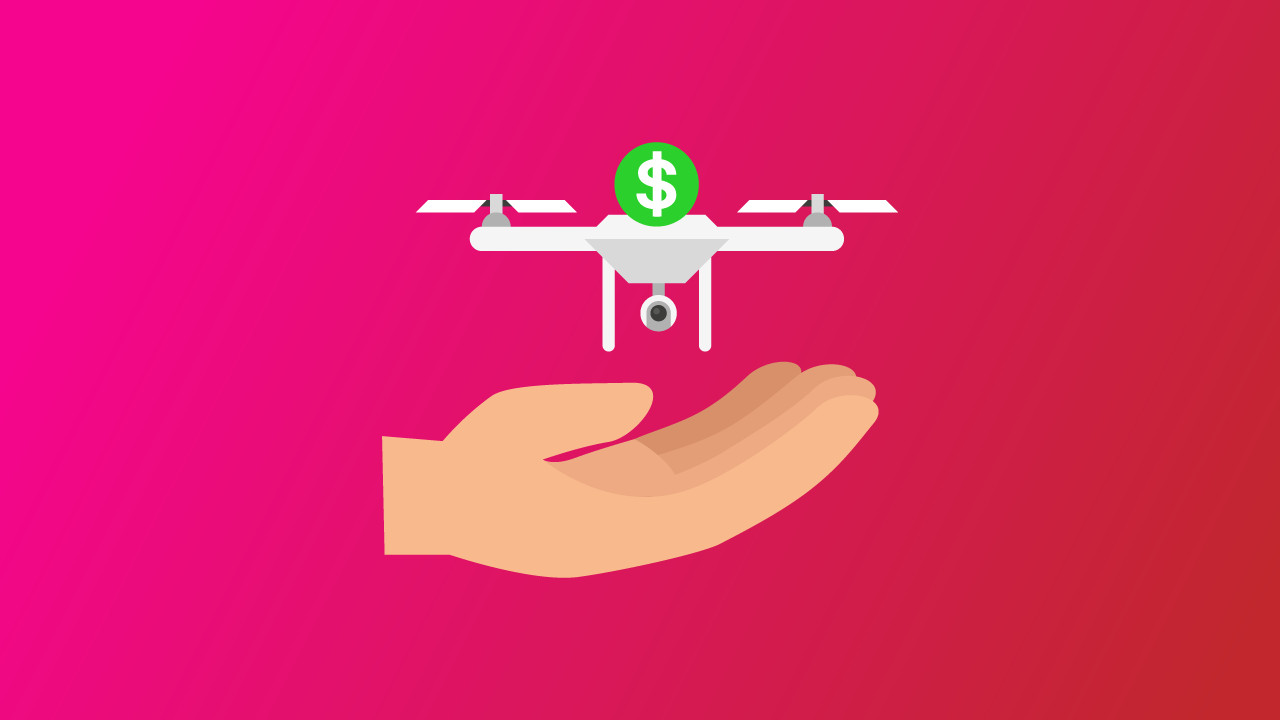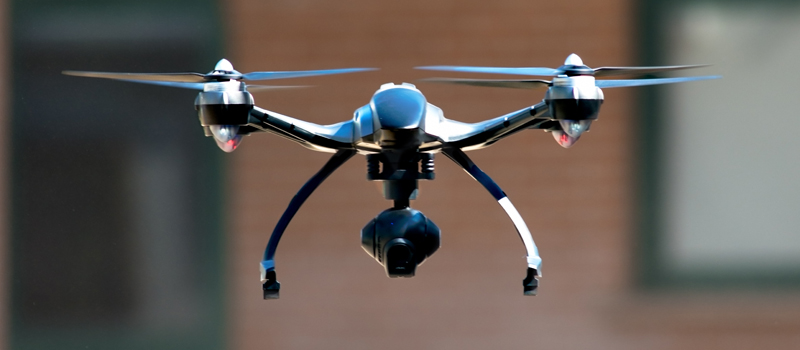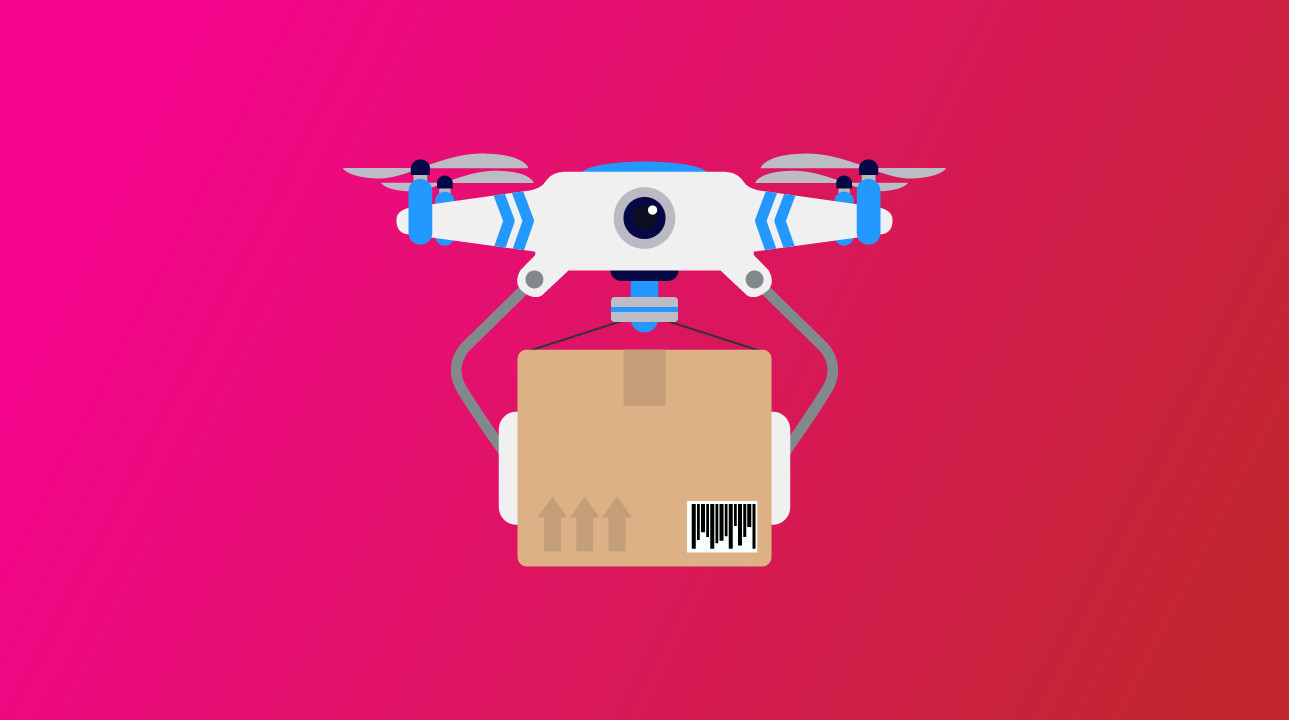-
Key Takeaways
-
Business Advantages of Owning a Drone
- Aerial Photography and Videography
- Expanding Drone Capabilities and Market Trends
-
Surveying
- Data Collection
- Reduced Risks
- Cost Saving
-
Package Delivery
-
Agriculture
-
Advantages of Owning a Drone as a Hobbyist
- Photography and Videography
- The Thrill of Flying
- Education
- Clubs
-
Drawbacks of Owning a Drone
- Safety
- Privacy
- Noise
- Learning Curve
- Fines
-
Cost Considerations of Owning a Drone
- Initial Purchase
- Maintenance
- Licensing
- Insurance
- New Cost Considerations for 2025
-
Potential Return On Investment (ROI)
- Creating a Sustainable Drone Business
-
Limitations of Owning a Drone (Drone Regulations)
- Overview of Rules for All Drone Operators
- Recreational (Hobby) Rules
- Commercial (Business) Rules
- Regulatory Changes in 2025
-
Conclusion
Drones were once the work of science fiction – now they’re everywhere. They have quickly evolved from fun toys into indispensable tools for various industries.
Yet, with all of their capabilities, many wonder if a drone is a worthy investment.
Are you wondering if you should take the leap?
Let’s go through the pros and cons and determine if buying a drone is worth the investment for you.
Key Takeaways
- Drones have multiple commercial advantages in industries such as marketing, package delivery, and surveying.
- For hobbyists, drones provide a unique way of capturing visuals, offering an adrenaline rush with drone racing and as an educational tool for learning electronics and aerodynamics.
- Establishing a drone business after getting the correct training and licensing allows operators and entrepreneurs to harness drones to create profitable businesses.
Business Advantages of Owning a Drone
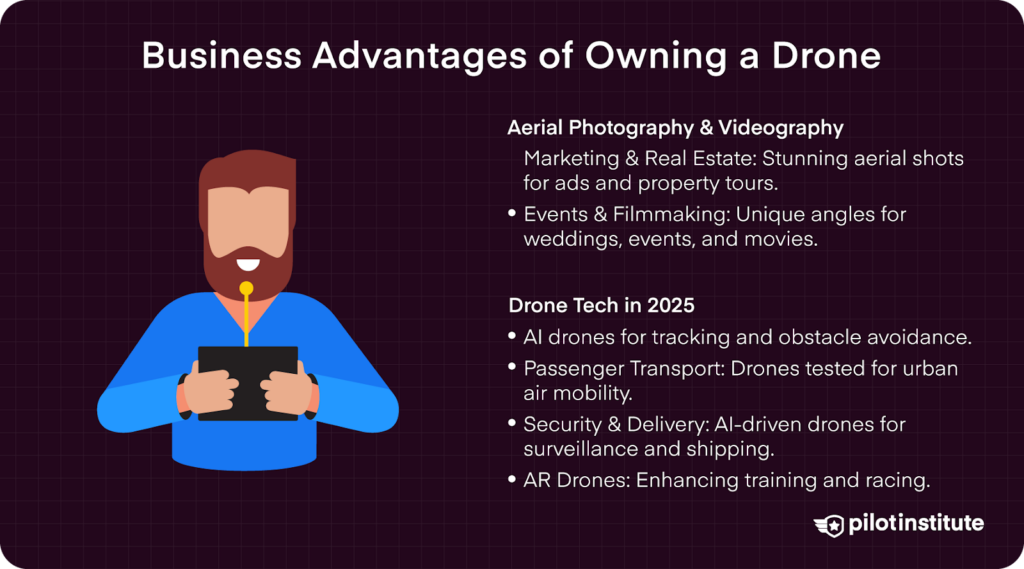
Aerial Photography and Videography
Marketing
Aerial photography and videography is becoming a widely used tool for businesses.
Capturing aerial footage of their properties, products, or services sets them apart in their marketing campaigns.
Real Estate
Drones in the real estate market have become a huge tool, with some drone businesses based solely around real estate showcasing.
Providing potential buyers with a bird’s eye view of properties (and even flights through properties) provides a new way of showcasing properties.
Events
Drones have become a tool often used by filmmakers to cover corporate events and weddings.
Drones can capture angles that regular cameras can’t, and this makes them valuable event photography tools.
Filmmaking
Drones have become a tool for amazing fast action shots and smooth wide-establishing shots on large high-end productions of commercials and films.
Drones have changed the game in filmmaking, allowing filmmakers more budget-friendly and safer ways of capturing aerial footage without using helicopters with large cameras.
We recommend our Drone Photo and Video Masterclass.
Expanding Drone Capabilities and Market Trends
Many of the latest drones now feature AI-powered flight controls. This provides automated tracking, obstacle avoidance, and real-time data analysis. These have been amazing improvements that enhance both commercial and recreational drone use.
In 2025, drones are increasingly being tested for transporting passengers. This helps to open the doors for advancements like autonomous air taxis and aerial ridesharing services.
Other exciting developments include the use of drones for security, law enforcement, and infrastructure monitoring, which has grown greatly. They use improved AI-powered recognition capabilities.
Companies like Amazon, Walmart, and FedEx have invested in expanding drone-based delivery programs to speed up deliveries and reduce reliance on ground vehicles.
Some consumer drones now feature AR overlays, which opens the door for interactive flight training, real-time object detection, and gaming experiences with drone racing leagues.
Surveying
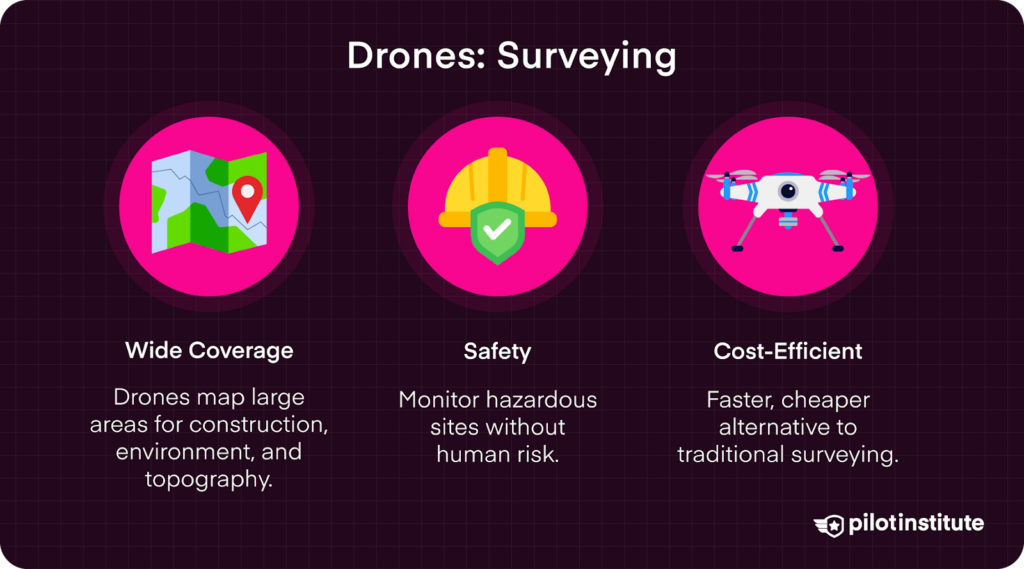
Data Collection
Drones can cover large areas, providing data for topographical maps, construction sites, and environmental monitoring.
Reduced Risks
In areas with challenging terrain or hazardous conditions, drones are used to safely monitor areas without human intervention.
Cost Saving
Using drones rather than traditional surveying methods can reduce costs by saving time and requiring fewer people to deliver the same or better results.
We recommend our Drone Mapping, Modeling, and Surveying Bundle Courses.
Package Delivery
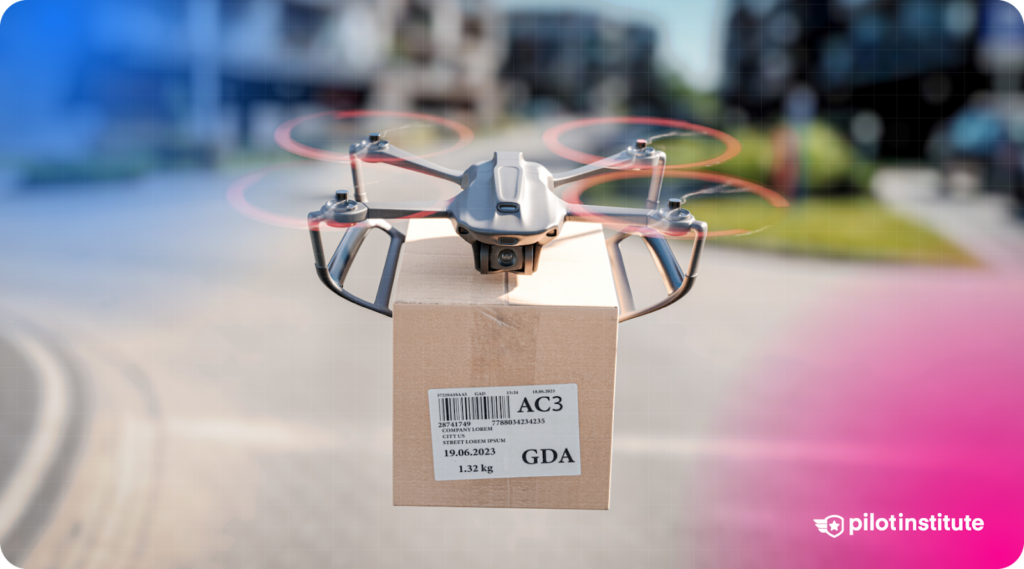
Drones are used for package deliveries, making package delivery services faster and reducing operational costs by delivering more packages in a shorter period.
Agriculture
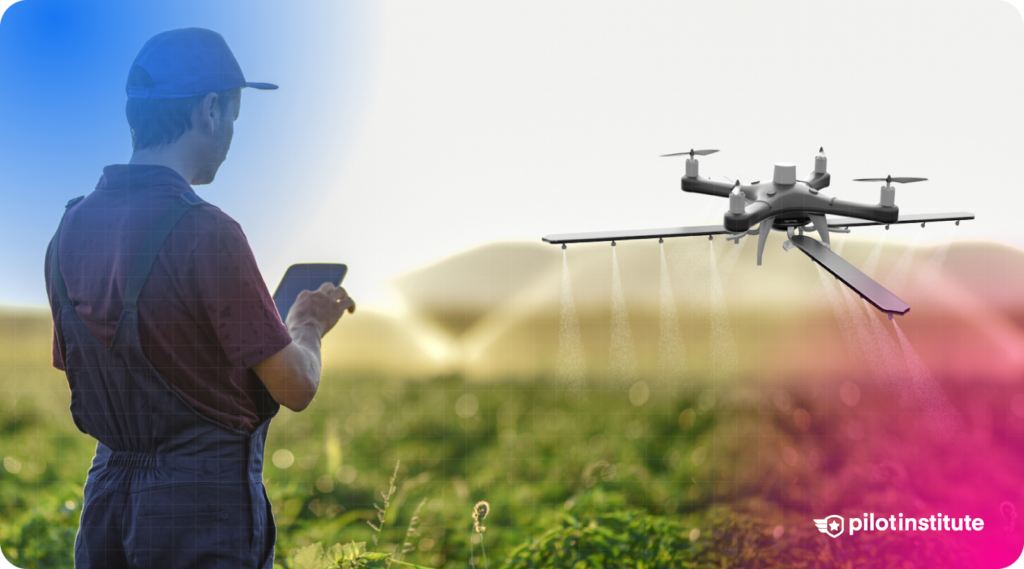
Drones equipped with multispectral sensors can analyze crop health and soil conditions.
With these techniques, water is conserved through optimizing irrigation with the data captured by the drones, thus helping farmers have a better crop yield.
Advantages of Owning a Drone as a Hobbyist
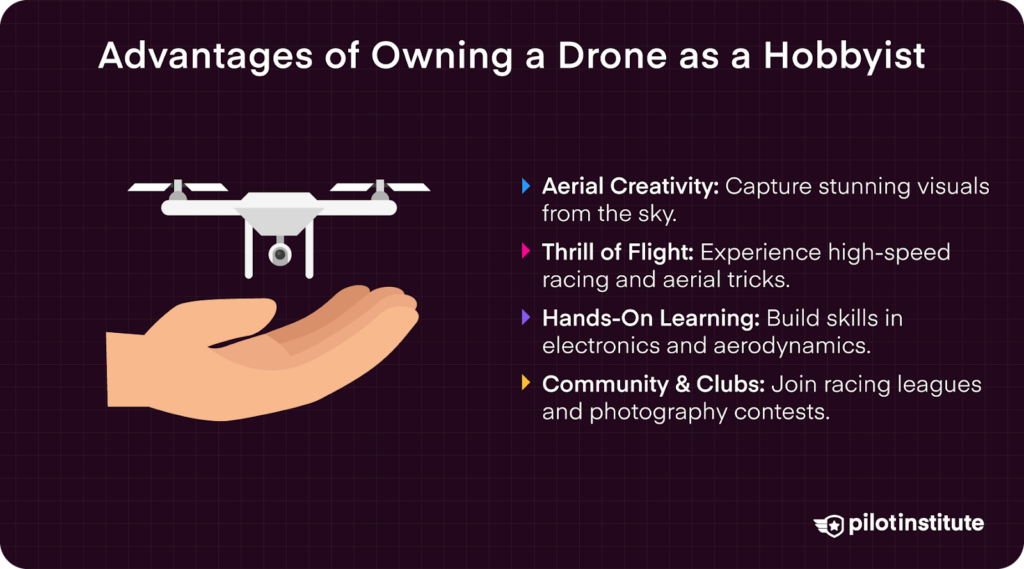
Photography and Videography
One of the most significant advantages and reasons why most people get a drone is the opportunity to capture amazing aerial visuals from the sky.
It allows hobbyists a different way for artistic, creative expression through aerial imaging.
The Thrill of Flying
There is an undeniable adrenaline rush when flying a drone, especially the smaller and faster racing drones.
Dashing through the sky, dodging obstacles, flying through small gaps, and practicing tricks is very fun and a way of relaxing and escaping from the daily grind.
Education
Drones offer hands-on experience with electronics, programming, and aerodynamics.
Assembling and adjusting all the parts of drones can help build technical skills. Overcoming crashes and malfunctions are part of working with drones, and this can enhance critical thinking and troubleshooting abilities.
Clubs
Drone or RC clubs and online communities have grown worldwide and provide a platform to exchange tips, share experiences, and socialize with people with the same interests.
These clubs also open up friendly competitions, from racing leagues to photography contests, and help grow everyone’s skills while having fun.
Drones have become a big part of modern hobbies through art, technology, and community.
Drawbacks of Owning a Drone
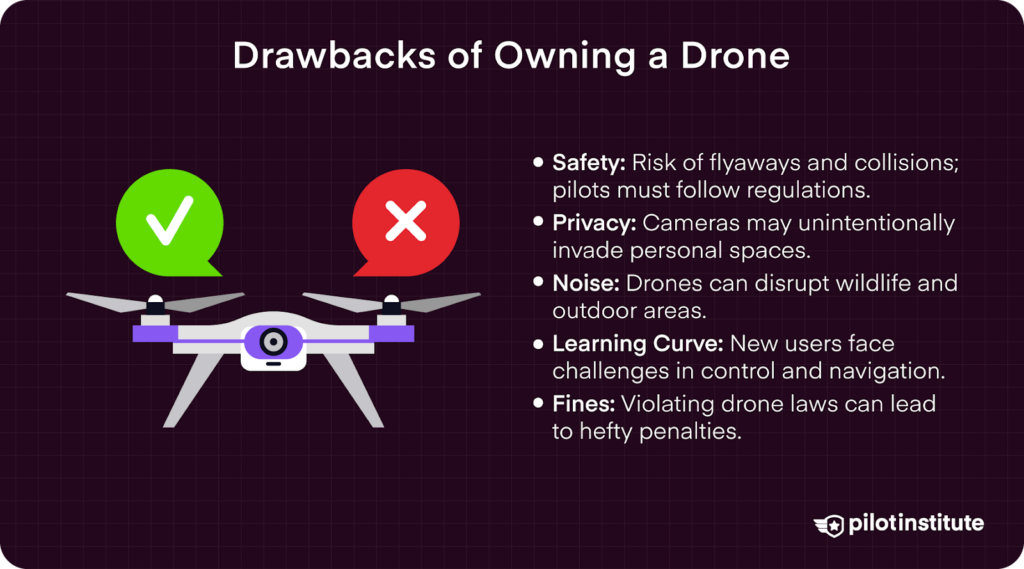
Safety
Safety is one of the most essential concerns for both operators and regulators.
Safety is one of the most significant drawbacks to owning a drone, as a lot of responsibility lies on the shoulders of the pilot. Many people don’t want to be held accountable for what could happen if something goes wrong.
Drones could fly away due to many factors, such as malfunctions or operator error, and with flyaways comes the possibility of collisions.
Collisions with manned aircraft are one of the biggest safety concerns with drones, as they can put the safety of both the occupants on the aircraft and people on the ground in danger.
Thus, being a responsible operator and following all regulations is paramount to flying drones safely so that you won’t be held accountable for making a mistake that endangers people’s lives.
Privacy
Drones, with their high-resolution cameras and zoom lenses, can easily capture amazing aerial views, but with this capability comes the pressing concern of privacy.
Even drone pilots with no plan to intrude could unintentionally violate someone’s privacy by capturing footage of people and private property without someone’s consent.
More concerning is when people purposely try using drones to spy on neighbors, celebrities, and properties. Due to this, people are very quickly on edge when a drone is flown in the vicinity of their area without their knowledge.
Noise
Noise pollution is a notable drawback of most drones. The buzzing sound of a drone, especially larger models, can disrupt outdoor spaces, becoming a nuisance for wildlife and humans.
Learning Curve
While the latest drones are becoming user-friendly and easier to fly, they still present a learning curve for many new users.
Mastering the controls for the correct flight paths, navigation, and safety protocols can be complicated. This learning phase poses the risk of damage to the drone, surrounding property, and even people if the correct steps are not taken.
An inexperienced pilot might easily misjudge distances, overlook obstacles, or lose control. The learning curve from becoming a novice to an experienced drone operator is filled with many possible crashes and pitfalls, and could be costly.
Fines
One of the most significant responsibilities and drawbacks to some operators is understanding the legal landscape of drone operations. Not adhering to drone regulations could result in hefty fines or imprisonment.
There are numerous potential legal pitfalls, from restricted flight zones to breaching privacy laws or interfering with commercial air traffic.
Drone operators must stay updated with evolving regulations and be aware that breaching them, intentionally or inadvertently, can have legal consequences.
Cost Considerations of Owning a Drone
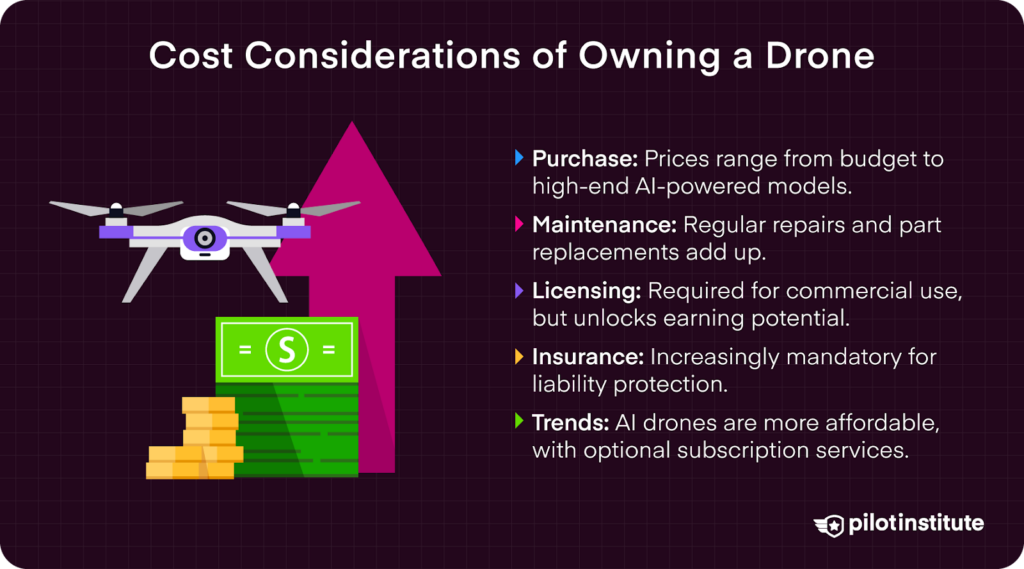
Initial Purchase
Drones come at various prices, from budget-friendly options to expensive high-end models with advanced capabilities. Even the budget-friendly options might be an expensive initial investment for people.
Maintenance
Drones are not just a one-time expense.
They require regular maintenance, such as part replacements like propellers or batteries, and potential repairs can add up over time.
Licensing
Venturing into commercial drone operations will incur additional costs for licensing. However, licensing opens you up to making money from drone operations.
Insurance
Due to the possibility of accidents or damage, many operators opt for insurance, and many commercial operators must have insurance to operate commercially legally.
Insurance can be one of the most expensive costs incurred for drone operators, though it protects operators against liability or drone replacement costs.
New Cost Considerations for 2025
New advanced drones with AI features, longer battery life, and automated functions are now available at lower price points. They’re now more accessible for hobbyists and small businesses.
Some manufacturers offer monthly subscriptions for access to their enhanced flight analytics, AI-assisted piloting, and cloud-based storage for drone footage.
More regions now require liability insurance for both recreational and commercial drone operations to cover potential damages or legal issues.
Potential Return On Investment (ROI)
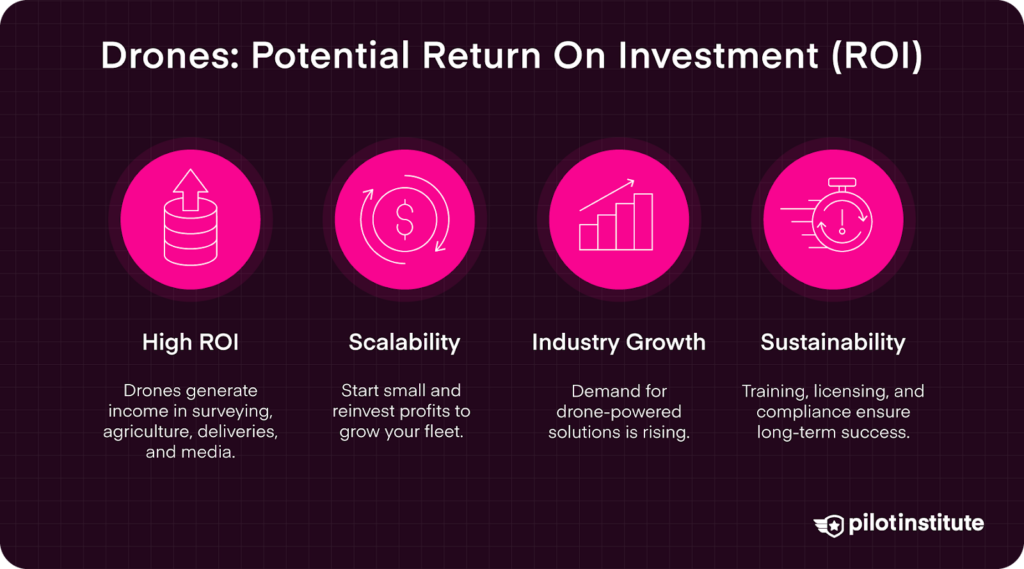
Entrepreneurs and drone enthusiasts can reap substantial ROI from commercial drone operations by tapping into commercial possibilities and applications.
As mentioned earlier, drones can be used for commercial operations such as surveying, agriculture, deliveries, aerial photography, and videography, allowing many possible ways to create income.
Commercial drone operations are easily scalable when managed correctly, starting with a cost-effective drone.
Once the initial investment is covered, they present a cost-effective method for operating, creating an ROI, and reinvesting profits to build a bigger or better drone fleet.
Due to the drone industry being relatively new and growing rapidly, drone-powered solutions are becoming increasingly in demand.
Creating a Sustainable Drone Business
Investing in training to ensure you have the correct licensing, skills, and tools is the most significant step to creating a sustainable drone business.
Then, ensure you stay compliant with the regulations, and you have the potential to create a highly sustainable and profitable commercial drone operation.
Anyone passionate about drones could start a good business with the proper foundation, strategy, compliance, and drive.
We recommend our Drone Business Made Easy course.
Limitations of Owning a Drone (Drone Regulations)
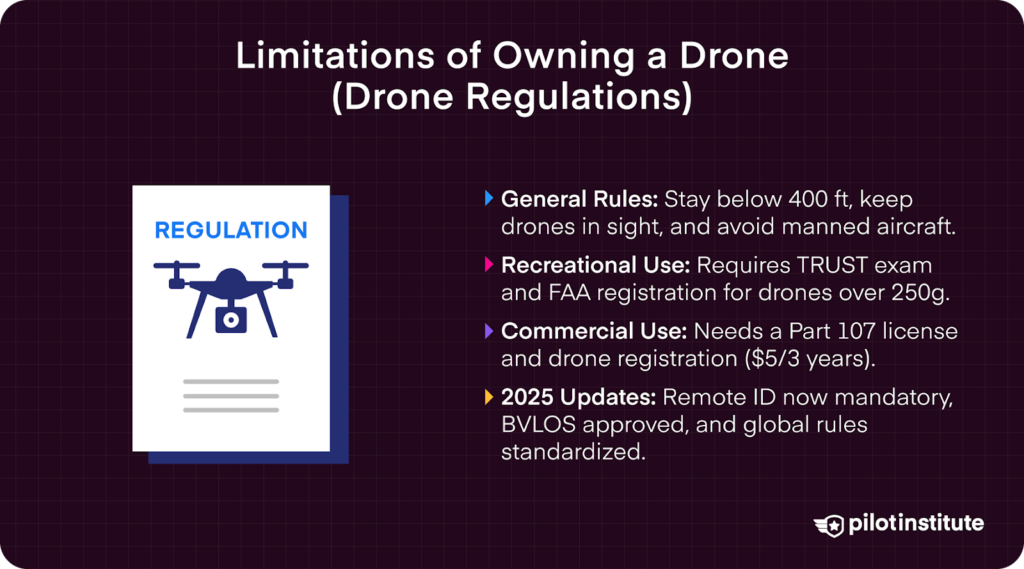
The regulations we are talking about here are based on FAA regulations as of 2023. Ensure you do your research for each country and its regulations.
Overview of Rules for All Drone Operators
- Stay below 400 feet at all times.
- Get authorization before flying in controlled airspace.
- Be physically and mentally able to fly a drone.
- Always fly within a visual line of sight, meaning you or your observer must always have eyes on the drone.
- The drone must weigh under 55 lbs (25 Kg).
- You need to always give way and yield to manned aircraft.
- You cannot fly your drone recklessly or carelessly.
The rest of the regulations differ depending on whether you fly for fun or work.
We have put together an interactive wiki to determine what laws you must follow, or see the basics below.
Recreational (Hobby) Rules
If you are flying for fun, you are flying under 44809 rules and must take the TRUST exam to fly legally. The TRUST exam is a free, online test administered by the FAA to provide recreational drone pilots with safety training and guidelines for flying in U.S. airspace.
If your drone weighs more than 250 grams, it must be registered with the FAA.
You must follow the safety guidelines of a Community-Based Organization (CBO).
We recommend our free 2-hour course that walks you through everything you need to know to fly legally for fun under the 44809 rules.
Commercial (Business) Rules
If you fly for commercial purposes, you need to obtain a Part 107 license (even if you are not being compensated for the flight).
Regardless of weight, all drones flown under Part 107 need to be registered. Registration is $5 and is valid for three years.
Take our Part 107 Made Easy course to help you obtain your Part 107 license.
Regulatory Changes in 2025
As of 2025, all drones operating in U.S. airspace must comply with the FAA’s Remote ID requirements. The benefit of this is that it helps track drones and keeps airspace operations safer.
Beyond Visual Line of Sight (BVLOS) operations are now more widely approved as well, this allows drones to be able to operate at longer distances for deliveries and infrastructure inspections.
New agreements between major aviation authorities have led to more uniform global drone regulations, so it is now easier to operate drones across multiple countries.
Conclusion
Drones have their set of challenges with the potential for severe repercussions if used irresponsibly.
But these valid concerns do not overshadow the value and potential benefits drones offer. The return on investment can be considerable, given the wide range of commercial applications available.
The drone industry is still young and growing, with a future ripe with opportunities for those prepared to seize them.
